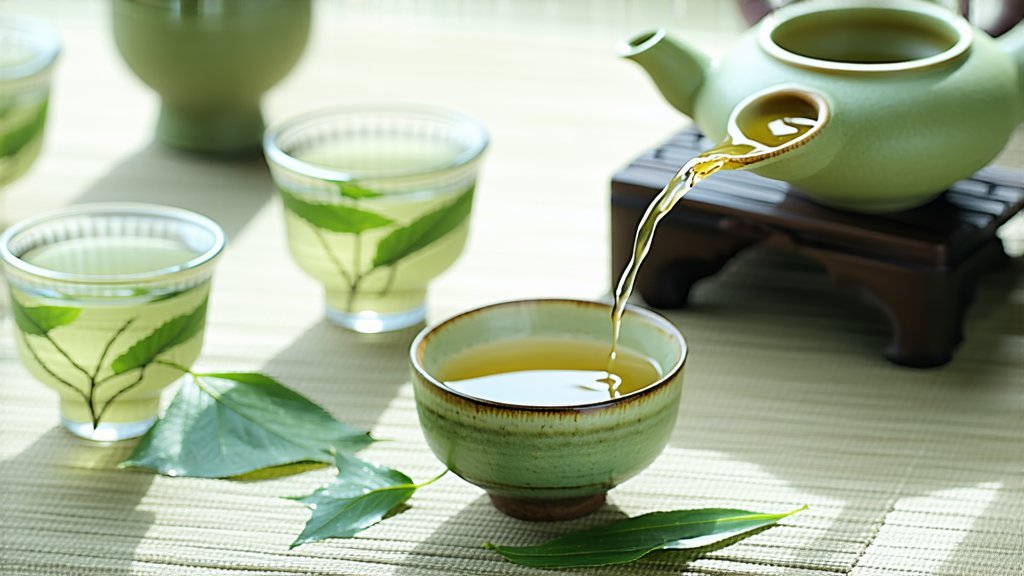
Nestled within the verdant hills of Fujian Province, China, lies a treasure trove of tea history and heritage that has been meticulously preserved through generations – the revered Bai Mu Dan, or "White Peony," variety of white tea. As a distinguished expert in Chinese tea culture and a master of tea ceremonies, I am delighted to embark on an exploration of this enchanting tea, sharing its rich narrative, diverse types, intricate production methods, and the art of its appreciation with an international audience.
A Glimpse into History
Bai Mu Dan's roots can be traced back over 800 years to the Song Dynasty (960-1279 AD), where it was initially discovered as a spontaneous mutation among the Camellia sinensis plants in the Fuding area of Fujian. This rare occurrence led to the development of a tea characterized by its distinctive silvery-white downy buds and greenish-yellow leaves, earning it the poetic moniker "Bai Mu Dan," which translates to "White Peony." Over time, Bai Mu Dan has become synonymous with elegance, purity, and refinement, embodying the essence of Chinese tea culture.
Varieties of Bai Mu Dan
Bai Mu Dan comes in two primary grades: Bai Mu Dan Wang Zhen (White Peony King) and Gao Dang Bai Mu Dan (High-grade White Peony). The former is the most prestigious, featuring larger, more robust leaves and a greater proportion of silvery-white downy hairs, imparting a more complex flavor profile. Gao Dang Bai Mu Dan, while slightly less refined, still offers a delightful balance of sweetness and subtle floral notes. Both varieties share the same meticulous craftsmanship and commitment to quality that defines Bai Mu Dan.
The Art of Crafting Bai Mu Dan
The production of Bai Mu Dan is a testament to the artistry and precision inherent in traditional Chinese tea-making. Harvested during the spring months when the tenderest buds and leaves are at their peak, the process begins with selective handpicking. Only the top two leaves and bud set are chosen, ensuring optimal freshness and flavor.
Following plucking, the leaves undergo a unique double-drying method. First, they are spread out thinly on bamboo mats under the gentle warmth of the sun or in well-ventilated indoor spaces, allowing them to slowly lose moisture without losing their natural fragrance. This initial drying phase is crucial as it preserves the delicate enzymes responsible for Bai Mu Dan's distinctive taste.
The second drying stage involves low-temperature baking or roasting, which further reduces moisture content to approximately 5%, ensuring longevity without compromising the tea's inherent qualities. The result is a tea that retains its natural sweetness, subtle floral aroma, and characteristic pale yellow liquor.
Savoring the Essence of Bai Mu Dan
To truly appreciate Bai Mu Dan, one must engage in the ritualistic practice of Gongfu Cha (the Way of Tea), which emphasizes mindfulness, respect for the tea, and an intimate connection between the drinker and the beverage. Here's a guide to savoring Bai Mu Dan:
-
Preparation: Use a Yixing clay teapot or a clear glass vessel to observe the unfurling leaves. Rinse the pot with boiling water to warm it up.
-
Measurement: For every 150ml of water, use approximately 3-5 grams of Bai Mu Dan leaves. Adjust according to personal preference for stronger or milder flavors.
-
Infusion: Boil fresh spring water to around 85°C (185°F). Steep the leaves for about 1-2 minutes for the first infusion, allowing subsequent steepings to increase by 30 seconds each time. Bai Mu Dan can be infused multiple times, revealing different facets of its flavor profile with each brew.
-
Observation: Watch as the leaves gracefully unfurl, releasing their hidden beauty and aroma. Appreciate the pale golden hue of the liquor, which shimmers like liquid silk.
-
Tasting: Sip slowly, allowing the tea to coat your palate. Note the initial sweetness, followed by a whisper of floral notes and a hint of minerality. The finish should be clean, with a lingering aftertaste that invites contemplation.
-
Reflection: Take a moment to reflect on the experience, appreciating not just the taste but also the cultural significance and centuries-old traditions encapsulated in each cup of Bai Mu Dan.
In conclusion, Bai Mu Dan stands as a shining example of China's profound tea heritage, inviting enthusiasts worldwide to partake in its timeless allure. From its storied past to its meticulous production process and the meditative act of tasting, every aspect of Bai Mu Dan embodies the harmony between nature, craftsmanship, and human appreciation. As you embark on your own journey with this extraordinary white tea, may you find solace in its delicate embrace and a deeper understanding of the rich tapestry that is Chinese tea culture.